The 11 Biggest Mistakes In Robotech‘s History
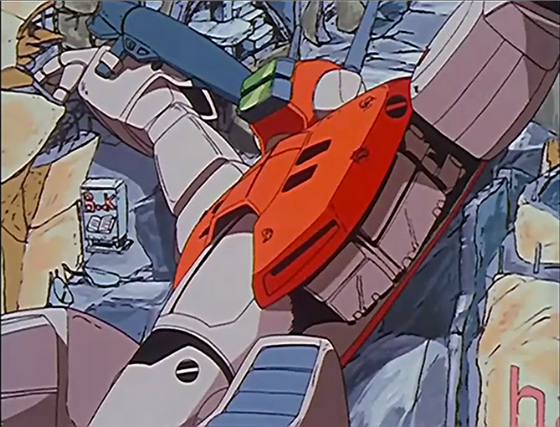 |
With its 30th anniversary right around the corner, and talk of a live-action adaptation surfacing again, Robotech’s continued popularity is increasingly difficult to explain. Very much a product of its era, the Robotech franchise is outdated and unnecessary today: fans now have easy access to three shows originally used to create the series (Macross, Southern Cross and MOSPEADA), so why bother with the edited version? Today, the Robotech narrative seems to be one more of successive failures and missteps, rather than multi-generational intergalactic war. Harmony Gold, the company behind Robotech, is persistent in its attempts to maintain and promote the series with new sequels and merchandise. To the dismay of fans, these efforts almost always transform any initial optimism into disappointment.
1. Failing to License Takatoku’s VF-1 Toy
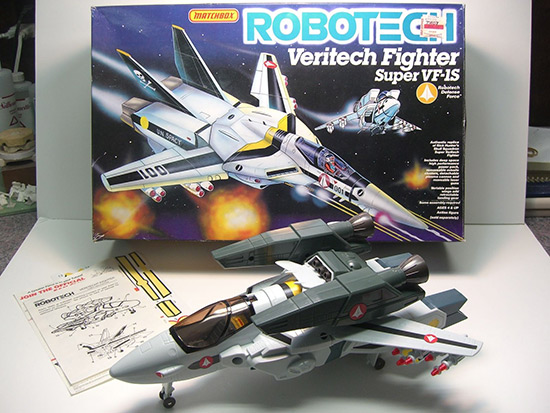 |
| kdomrn |
Like any cartoon in the ’80s with cool robots, Robotech had the potential to sell a lot of toys. Macross and MOSPEADA had numerous transforming toys released to tie in with their original Japanese broadcasts, so by all accounts Harmony Gold and main toy licensee Matchbox Toys could have brought those over and cleaned up. Except someone beat them to it.
Hasbro, the company behind the Transformers toy line, built their popular franchise out of existing Japanese transforming toys and had beaten Robotech to the punch when it licensed Takatoku’s fantastic VF-1 Valkyrie toy, based on the ubiquitous transforming jet from Macross. Takatoku’s toy was a solid piece of plastic, not quite screen accurate but immensely charming and a lot of fun to play with. By securing the rights to it, and inadvertently prohibiting it from being brought over to the U.S. under the Robotech name, fans were deprived of a high quality toy based on the series’ most popular robot. In it’s place, Matchbox produced its own large-scale VF-1 toy, but it was an embarrassment due to the fact that it was largely proportioned and couldn’t even transform
The only transforming VF-1 toy that Robotech fans got in the ’80s was a smaller scale toy with exaggerated “Super Deformed” proportions. In Japan these were sold as “Joke Machines,” although the real joke was on the poor kids who got them on Christmas morning, 1985.
2. Betting Robotech II’s Budget on International Exchange Rates
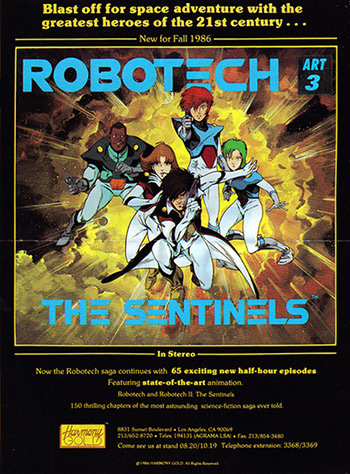 |
After Robotech’s success in syndication, Harmony Gold began work on a sequel, this time featuring all-new animation created by studios in Japan. Unfortunately, Harmony Gold and Matchbox Toys were banking on the uneven exchange rates of the 1980s to carry the show, titled Robotech II: The Sentinels, through production.
An undervalued Japanese yen had allowed Japanese goods to be exported at lower prices, and the production of The Sentinels hinged on the idea that the weaker yen would allow the U.S. producers to get more celluloid for their buck. Unfortunately, the Reagan administration, along with the governments of France, West Germany and the United Kingdom, were eager to balance the Japanese exchange rate and remove the advantage held by Japanese companies. Formalized in the Plaza Accord, signed in September of 1985, these economic changes kicked in while The Sentinels was in production the following year, quickly derailing plans for a full 65-episode series. With the U.S. dollar no longer enjoying the same purchasing power in Japan that it had just a few months prior, the show was shelved with only three episodes in the can.
While the show’s failure wouldn’t be the only kick in the nuts endured by Robotech fans over the coming years, it was the only kick in the nuts directly administered by an American president.
3. Partnering with Cannon Films
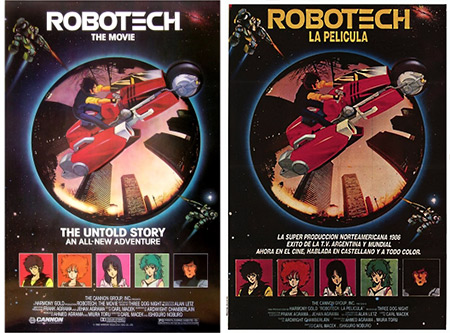 |
Legendary film company Cannon Films, makers of such filmic art as Cobra, The Delta Force and American Ninja, went knocking on Harmony Gold’s door, eager to cash in on their popular cartoon series. Live-action or new animation was apparently unfeasible, so producers decided to adapt Megazone 23, a popular direct-to-video anime film from 1985 that shared many staff members with Macross and MOSPEADA.
Grander plans to set the film as a prequel to the original TV series and tie it into the then-in-production Sentinels were scratched at the last minute after Cannon producers were displeased with the lack of action in the film. The script was hastily rewritten and footage from Southern Cross was unwisely thrown in alongside new animation commissioned to replace Megazone 23’s decidedly morose ending. The new additions, including plenty of action, were warmly regarded by Cannon execs, with one reportedly exclaiming “Now THAT’S a Cannon film!”
Titled Robotech: The Untold Story, its test marketing in Texas was a disaster. Anecdotal stories from the showings described parents carrying their sobbing children out of the theatre in the middle of the film. It was enough of an embarrassment that even Harmony Gold and Macek distanced themselves with the film, and it never saw a theatrical release or home video release in the U.S. It was clear Cannon producers didn’t really understand the source material, and the last-minute changes were so haphazard that the production bible had story elements literally crossed out and rewritten by hand. 1986 was also an extremely bad year for Cannon Films, and their financial difficulties required a $75 million bailout from Warner Brothers.
Legendary anime director Noburo Ishiguro, who directed both the original Macross series and Megazone 23, was completely unaware of the adaption or the entirely-new ending commissioned for it until it was shown at a Megazone 23 fan event a few years ago in Japan. Awkward.
4. Suing FASA Corporation
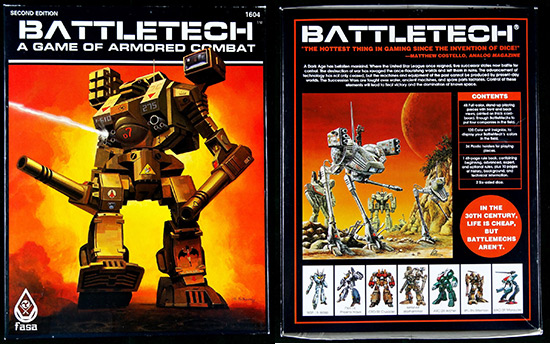 |
| avidgamersetc |
The giant robot anime phenomenon was popular enough among nerds in the ’80s that it quickly popped up in other geek spheres. Tabletop games like FASA Corporation’s Battletech and R. Talsorian’s Mekton capitalized on fans’ newly discovered appreciation for watching nth-generation anime videotapes. FASA Corporation had already found themselves in hot water with Lucasfilm when their giant robot game was initially released as “Battledroids,” but an even larger legal battle was to come when Harmony Gold discovered FASA Games was using designs they owned the rights to.
Alongside those designs from Macross, Battletech also featured robots from other anime titles like Crusher Joe and Fang of the Sun Dougram alongside FASA’s own designs. Harmony Gold went after FASA for not properly licensing their designs, while FASA claimed that it had. The end result was that the designs borrowed from Japanese animation titles were removed from Battletech books and subsequently referred to as “the Unseen.” I’m not going to bother making a judgment call on who was right and who was wrong, because if you search the Internet and old USENET newsgroups you’ll discover that this topic has been discussed exhaustively for decades. That said, the 1980s was a crazy time for licensing Japanese goods, so it’s entirely feasible that both companies could have been right.
The Robotech name originally came from a line of model kits released by Revell in the early 1980s, which featured model kits from Macross, Dougram and Orguss. With multiple companies involved in the production of these shows, lots of companies may or may not have claimed international rights, and FASA may well have signed an agreement with a company that claimed ownership or licensing rights for the designs. Even still, this lawsuit helped solidify Harmony Gold’s litigious reputation.
To make things really weird, for the Japanese release of Battletech years later, the local publisher tapped Studio Nue to redesign the clunky Battletech mechs for Japanese audiences. Studio Nue, of course, was the studio that developed the original Macross TV series.
5. Picking the Wrong Video Game Developer
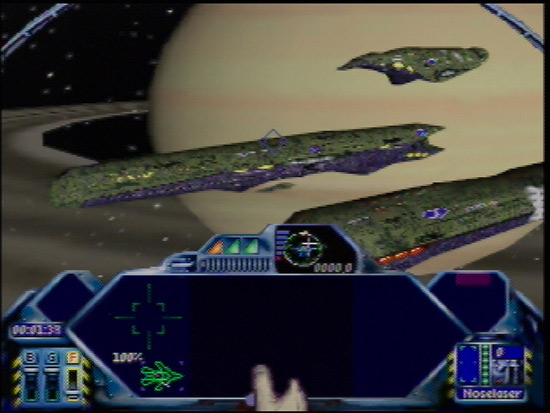 |
| Opus |
Announced alongside some of the earliest games for the Nintendo 64, Gametek’s Robotech project was to be the first time the franchise had appeared in video game form. Nintendo’s decision to stick with cartridges alienated lots of the larger publishers, allowing companies like Gametek to catch some of the limelight. First titled Robotech Academy, it was later renamed Robotech: Crystal Dreams. It, as you can probably guess, never saw release.
Early press for the game showed high-res renders of a Veritech fighter that was far beyond what the Nintendo 64 was capable of, but game designers had planned for it to be an equally ambitious open-world space sim. The game’s formidable scope was unfortunately at odds with Gametek’s limited resources and eventual financial difficulties, which spelled the end of Crystal Dreams as it neared production. Prior to picking up the Robotech license, Gametek had been known mostly for simpler games based on properties like Wheel of Fortune or Jeopardy, and the big game was just too big for such a small company.
Japanese toy company Tomy had originally been planning on releasing Crystal Dreams in Japan as Macross: Another Dimension, which would have been a first for a Robotech product.
6. Remaining Inconsistent and Secretive on Macross Products
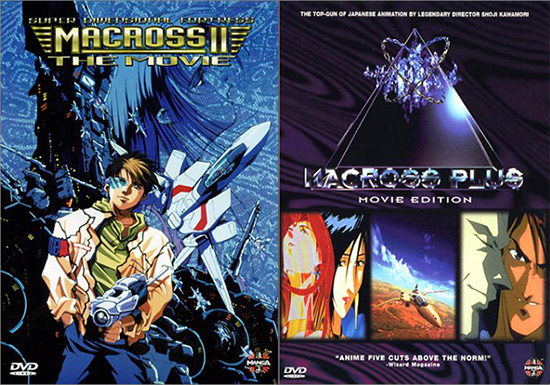 |
Harmony Gold is regularly vilified by Macross fans in the West because of the company’s actions to block English-language Macross merchandise. In the late ’90s, a number of products were set to be released in the U.S., including toys based on the sequel Macross Plus, the Macross VFX-2 Playstation game and the Macross 7 Trash manga. None ever reached our shores.
Oddly, in the mid ’90s, both Macross II and Macross Plus were released by U.S. Renditions and Manga Entertainment in the U.S. without any interference from Harmony Gold, something the company later chalked up to being understaffed and unaware. More recently, multiple versions of the original Macross have been released on DVD by AnimEigo and ADV Films, both with the involvement and approval of Harmony Gold. Regardless of whether or not Harmony Gold has actively been fighting the importation of Macross goods (something they’ve constantly denied), in fans’ eyes their inconsistent stance has alienated a huge swath of potential customers.
Part of the problem lies with Harmony Gold’s rights, which were acquired via Tatsunoko Productions. Tatsunoko was the production studio for the original Macross TV series and as part of their involvement in the show, acquired the international distribution rights from Big West, the company that owns Macross. Over the last decade, Big West and Tatsunoko have duked it out in Japanese courts, a situation that has no doubt exacerbated the overseas rights issues, regardless of Harmony Gold’s involvement.
It’s been a PR disaster for Harmony Gold, and something they could have easily avoided by being a bit more open. The result is that they’ve allowed themselves to be portrayed as the villain, while fans in the U.S. continue to spend serious coin importing Macross merchandise. That’s money that Harmony Gold won’t be able to get a percentage of and something that could have been easily avoided.
7. Robotech 3000’s Very Existence
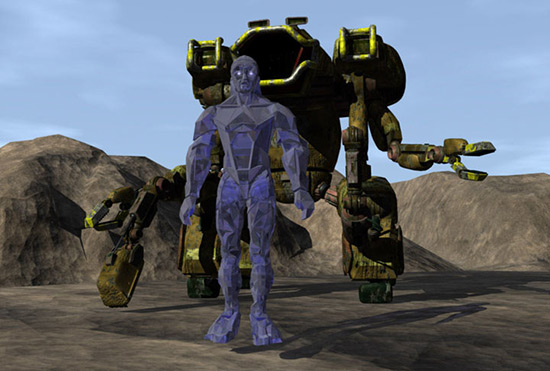 |
Robotech 3000 was Harmony Gold’s attempt to cash in on the CG cartoon craze of the late 1990s and early 2000s. Buoyed by the success of shows like Reboot and Voltron: The Third Dimension, Robotech 3000 was to be a fully 3D CG affair produced by Netter Digital. At the time, Netter Digital had substantial nerd cred for its work on Babylon 5 and its spin-off show Crusade, so fans were optimistic. It should come as no surprise that like every other attempt at a Robotech sequel, it did not end well.
Early images released scuttled any sort of optimism that even the most diehard Robotech fans might have had, as 3000 was revealed to look more like an uninspired Saturday morning cartoon than anything resembling the strong designs and imagery of the original series. The show was shelved with only a trailer of work up to that point seeing release, both online and as a DVD extra. To its credit, Robotech 3000 was the first serious attempt at a new Robotech animation project since the dual failures of The Sentinels and The Untold Story, but it seems obvious now that the show was more an attempt to cash in on a perceived trend using an existing franchise rather than trying to genuinely reach out to existing fans.
Shortly after Robotech 3000 was shelved, a new influx of employees attempted to restart the Robotech franchise by actively reaching out to fans through an official Robotech websites, seemingly the first time Harmony Gold had given a shit about fans since the late 1980s.
8. Getting Stingy on The Shadow Chronicles’ Production
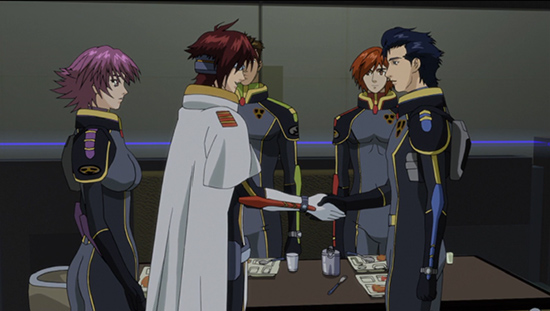 |
Released in 2007, The Shadow Chronicles was the first animated Robotech sequel to see an actual, official, complete release. That doesn’t mean it was any good, though. Produced in conjunction with the South Korean animation studio DR Movie, the film was a showpiece for the talents of Harmony Gold’s new staff. Largely the brainchild of Tommy Yune, an American comic artist of Korean descent who got his start illustrating furry comics, The Shadow Chronicles was an unquestionable failure stylistically, technically and narratively.
Picking up after the original series, The Shadow Chronicles focused on the further adventures of well-known characters you couldn’t recognize because the character designs were really, really awful. Any and all character resemblance was thrown out the window in favor of redesigning existing characters with Liefeld-esque proportions: the guys had transformed into rippling musclemen and the women had outrageous busts. The animation was an awkward mish-mash of 2D and cell-shaded 3D, with effects work, like explosions, that looked like an afterthought. The initial version of The Shadow Chronicles was so egregious that it required a script rewrite, making the eventually released version even the more impressive considering that what we got was the “improved” version. It’s clear that Harmony Gold relied heavily on DR Movie, who were perhaps unprepared or unwilling to put much work into it. There were bizarre omissions like no character designer listed in the credits, leading one to wonder just how much design work was foisted upon the Korean animation studio.
DR Movie, to its credit, has worked on numerous well-known titles, including Bleach and Macross Plus, so something tells me that The Shadow Chronicles isn’t going in their demo reel.
9. Trying to Cheat the Italian Tax System
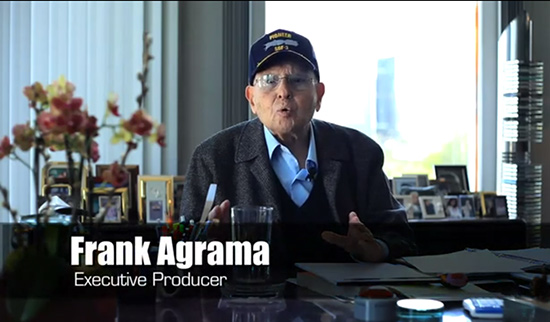 |
| Harmony Gold |
Frank Agrama, Harmony Gold USA founder and producer on just about all of the Robotech projects, was found guilty of tax evasion in an Italian court back in 2012. Marking the franchise’s second brush with a head of state, Agrama had apparently sold Paramount Pictures properties to former Italian Prime Minister Silvio Berlusconi’s TV network, and somewhere in the transaction shady business went down and Berlusconi pocketed extra funds. Not that this should be surprising, as Italian politics is absurdly corrupt (as evidenced by a Prime Minister owning his own TV station), but the Robotech connection is what makes it hilarious.
Despite being sentenced to three years in jail (which he won’t have to serve), Agrama was still on the hook for part of 10 million euro in damages. While Agrama seems to have gotten off relatively easily, and Harmony Gold continues to chug along, subsequent sequel attempts suggest that the company may not be in the best financial situation. Robotech: Love Live Alive, released in 2013, was little more than a 30 year-old MOSPEADA music video collection with a few minutes of new footage thrown in. The latest sequel, Robotech Academy, launched as a Kickstarter campaign to try and raise funds for a pilot.
10. Getting Everything About Crowdfunding Totally Wrong
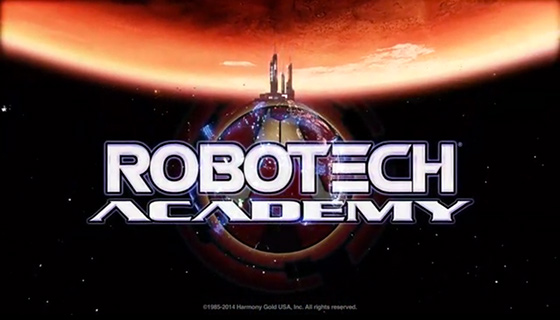 |
| Harmony Gold |
The Robotech RPG Tactics Kickstarter, funded in May of 2013, was an unquestionable success. Tabletop game publisher Palladium Books managed to raise nearly $1.5 million for their miniatures game, well above their funding goal of $70,000. Not only did the crowdfunding campaign’s success suggest that Robotech products were still viable, it no doubt got the staff at Harmony Gold thinking about new ways to raise funds for the next sequel. That’s my assumption, anyways, because about a year after the RPG Tactics campaign ended, Harmony Gold started their own Kickstarter to produce a pilot episode of a new Robotech TV series, titled Robotech Academy. It was a disaster.
While the project’s goal of $500,000 was high, it wasn’t unreasonable considering the scope of the project. Masahiro Ando’s Under the Dog Kickstarter aimed to produce a similar pilot and asked for more money than Academy, but still managed to raise nearly $900,000. When one compares the two projects, though, Harmony Gold’s hubris and crowdfunding inexperience shows through. The project was mostly banking on the name of franchise to attract fans, and initially there was little in the way of animation, production designs or even a decent story synopsis to entice fans. Backer rewards for the project were paltry, apparently missing the lesson that lots of non-gamers signed up for Robotech RPG Tactics because it included lots of cool little models.
The campaign was eventually cancelled a few weeks before it’s scheduled end, but not before new videos featuring voice actors and new rewards were added in an attempt to resuscitate the project. It was too little, too late. When the plug was pulled, only $194,574 had been raised, roughly 38% of the project’s goal.
The Kickstarter’s failure must have come as quite a blow for Harmony Gold, who had been so confident in the project that they added a $1 “Enemy Spy” tier to the campaign, to encourage Robotech haters to engage in the flame war that was brewing on the page’s comments section. Whoops.
11. Betting Their Franchise on Hollywood
 |
| Mike Toole |
In 2007, it was announced that plans were underway for a proper big budget Hollywood adaption of Robotech, with actor Tobey Maguire attached. With ’80s nostalgia running rampant through pop culture and the success of Michael Bay’s Transformers films, it sort of made sense. It’s been seven years, but the film has yet to materialize.
After the initial announcement, Harmony Gold began focusing on the project at the cost of other Robotech projects. For years, company officials had been telling fans that a followup to The Shadow Chronicles was on hold until the live-action film materialized, which explains the lull in releases until 2013’s Love Live Alive. As recently as 2013, Leonardo DiCaprio and director Nic Mathieu were reportedly attached to the project, but aside from a few brief news stories nothing substantial has come out about the film. Harmony Gold reportedly stopped mentioning the film in its convention panels this year, for the first time in years, which may be a sign that despite their best efforts, the project is dead. Or not – yesterday, yet another writer was announced to be taking a crack at it, though there’s no reason to believe that actually makes the movie more likely.
Producers of the original Macross entered talks with a Hollywood studio in the mid ’90s to produce a live-action film based on that franchise, although the project never went anywhere. Maybe we’re just not meant to see a live-action VF-1 on the big screen. Given how poorly the Transformers made the transition to live-action, that may not be such a bad thing.
